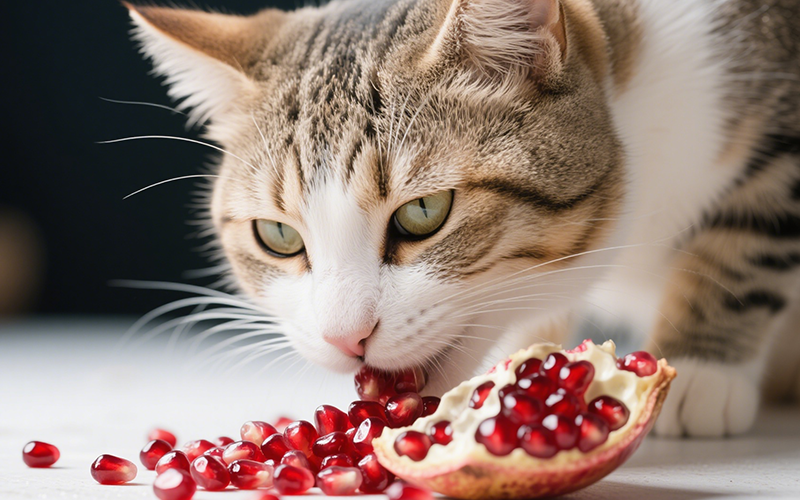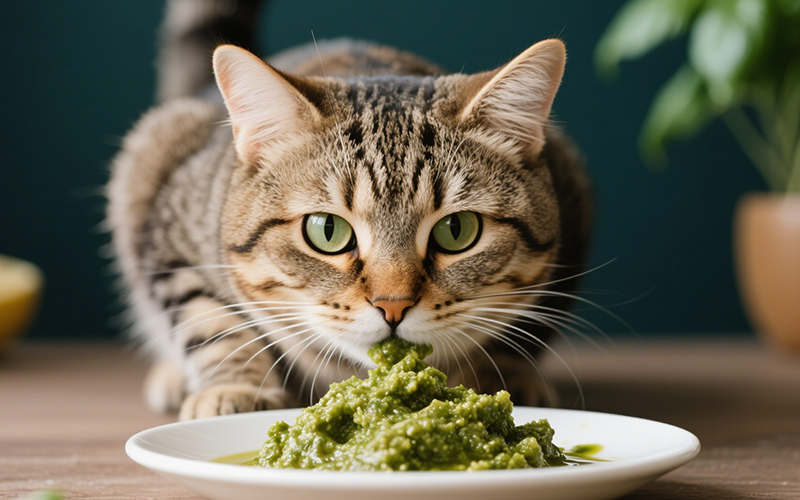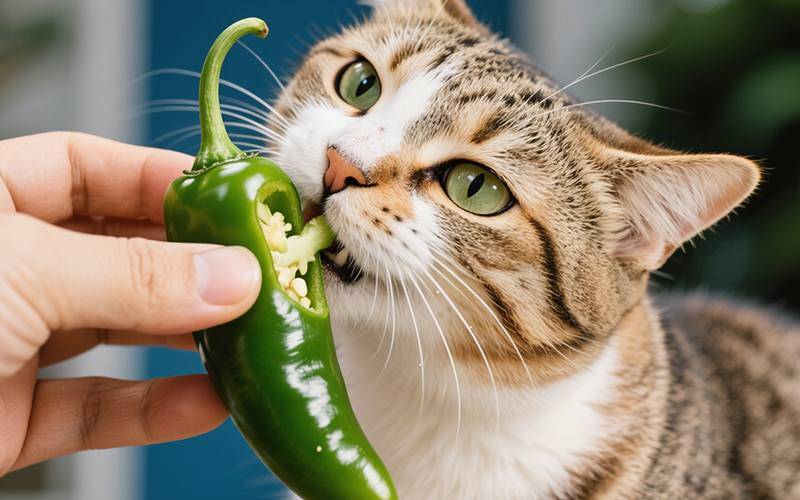Urgent Warning for Cat Owners: Can Cats Eat Lime? Why Citrus is Toxic (Vet Explains)
- 11 Apr 2025 16:15
Cats explore the world with curiosity, often tasting or batting at objects that catch their fancy. Brightly colored fruits, like the vibrant green lime sitting on your kitchen counter or garnishing your drink, might attract their attention. This naturally leads to the critical question for responsible pet owners: can cats eat lime? While we enjoy the zesty flavor limes add to our food and drinks, the reality for our feline companions is starkly different and potentially dangerous.
Unlike some human foods that cats can safely nibble in moderation, limes fall into a category that requires extreme caution. Cats have unique physiological sensitivities, particularly to compounds found abundantly in citrus fruits. As obligate carnivores, their systems are finely tuned for processing meat, not plant matter, especially acidic and aromatic fruits like limes. This article provides a comprehensive, authoritative exploration into why limes are harmful to cats, detailing the toxic components, symptoms of poisoning, and crucial preventative measures, ensuring you have the expert knowledge to keep your cat safe.

What Are Limes? A Quick Look at the Fruit
Limes are citrus fruits, belonging to the same family as lemons, oranges, and grapefruits. They are known for their sour taste, high acidity (due to citric acid), and distinctive aroma. Key components of the lime fruit include:
Peel (Zest/Rind): The outer green layer, rich in aromatic essential oils.
Pith: The white, spongy layer beneath the peel.
Flesh (Pulp) and Juice: The acidic inner part containing juice vesicles.
Seeds: Small pips found within the flesh.
Leaves: The leaves of the lime tree also contain essential oils.
While nutritious for humans (providing Vitamin C), several of these components, particularly the essential oils concentrated in the peel and leaves, pose a significant threat to feline health.
Feline Biology vs. Citrus Fruits: A Fundamental Mismatch
Understanding why limes are bad for cats requires looking at feline biology:
Obligate Carnivores: Cats evolved to get their nutrients from meat. Their digestive tracts are short and optimized for protein and fat, not for breaking down significant amounts of plant material or handling high acidity well.
Sensitivity to Smells and Tastes: Cats have a powerful sense of smell. The intense aroma of citrus, driven by compounds like limonene, is often naturally repellent to them. This is a protective mechanism, as these compounds can be harmful. The sour taste is also generally unappealing.
Metabolic Differences: Cats lack certain liver enzymes that humans and other animals possess, making it harder for them to metabolize and eliminate particular compounds found in plants, including the essential oils in limes. This can lead to a toxic buildup.
This biological blueprint makes cats uniquely vulnerable to the compounds present in limes and other citrus fruits.
The Definitive Answer: Are Limes Toxic to Cats?
Yes, unequivocally. Limes are considered **toxic to cats**. All parts of the lime fruit and the lime plant itself contain substances that can cause adverse reactions, ranging from mild gastrointestinal upset to severe poisoning.
The primary culprits are:
Essential Oils: Specifically limonene and linalool, found in high concentrations in the peel, leaves, and to a lesser extent, the juice and flesh.
Psoralens: Phototoxic compounds present in the plant and fruit.
Citric Acid: While less severely toxic than the oils, the high acidity can irritate the mouth and digestive system.
Ingestion of any part of the lime – the peel, flesh, juice, seeds, or leaves – can lead to symptoms of toxicity. Even skin contact with the essential oils (e.g., from the peel or concentrated products) or inhaling diffused lime essential oil can be harmful.
Understanding the Toxic Components in Limes
Let's break down why these components are dangerous for cats:
Limonene and Linalool (Essential Oils)
These volatile organic compounds give limes their characteristic scent. While pleasant to us, they are problematic for cats:
High Concentration: Especially potent in the peel and leaves.
Irritation: Can cause irritation to the skin, mouth, throat, and digestive tract.
Gastrointestinal Effects: Often lead to drooling, vomiting, and diarrhea upon ingestion.
Neurological Effects: In cases of significant ingestion or exposure (especially to concentrated essential oils), these compounds can affect the central nervous system, potentially causing symptoms like lethargy, weakness, muscle tremors, difficulty walking (ataxia), and even hypothermia or collapse.
Liver Damage: The cat's liver struggles to metabolize these compounds, and high exposure can potentially lead to liver damage or failure.
Inhalation Risk: Diffusing lime essential oils is dangerous for cats, as inhalation can cause respiratory distress and neurological symptoms.
The danger posed by lime essential oil for cats cannot be overstated; concentrated forms are particularly hazardous.
Psoralens
These compounds are naturally occurring in limes and other citrus plants. Their primary concern is photosensitivity:
Phototoxicity: If a cat ingests psoralens or gets them on their skin/fur and is then exposed to ultraviolet (UV) light (like sunlight), it can cause a severe skin reaction.
Symptoms: This reaction resembles a severe sunburn, with redness, blistering, and potential skin damage (photodermatitis).
Citric Acid
While not toxic in the same way as essential oils, the high acidity of lime juice and flesh can cause:
Oral Irritation: Discomfort or sores in the mouth.
Stomach Upset: Can contribute to vomiting and general gastrointestinal discomfort.
Symptoms of Lime Poisoning in Cats
If a cat has ingested lime or had significant contact with its oils, watch closely for these signs of toxicity. Symptoms can vary depending on the amount ingested and the part of the lime involved.
Common / Mild Symptoms (often from small ingestion/contact):
Excessive Drooling or Foaming at the Mouth
Vomiting
Diarrhea
Lethargy / Depression
Loss of Appetite
Skin Irritation or Rash (especially after contact with peel/oil)
Severe Symptoms (often from larger ingestion or essential oil exposure):
Weakness
Difficulty Walking / Ataxia (stumbling)
Muscle Tremors
Photosensitivity (severe skin reaction after sun exposure)
Low Blood Pressure (Hypotension)
Hypothermia (low body temperature)
Collapse
Potential Liver Failure (may present with jaundice - yellowing of skin/eyes, later on)
Symptoms of lime poisoning in cats require immediate veterinary attention. Even mild symptoms warrant a call to your vet or a pet poison helpline.
What Parts of the Lime are Dangerous? All of Them.
It's crucial to understand that no part of the lime is safe for cats:
Lime Peel (Zest/Rind): Highly dangerous due to the concentrated essential oils (limonene, linalool) and psoralens. Even licking the peel can cause irritation and potential toxicity.
Lime Flesh and Juice: Contain citric acid causing irritation, and lower but still present levels of essential oils and psoralens. Lime juice is harmful to cats.
Lime Seeds: Contain small amounts of toxic compounds and can potentially be a choking hazard, although the primary risk comes from the fruit's other components.
Lime Leaves: Also contain essential oils and psoralens, making them toxic if chewed or ingested.
Lime Essential Oil: Highly concentrated and extremely dangerous through ingestion, skin contact, or inhalation (diffusion).
The message is clear: keep all forms of lime completely away from your cat.
What to Do if Your Cat Ingests or Contacts Lime
Accidents happen. If you suspect your cat has eaten lime or come into contact with its oils, act quickly:
1. Remove Your Cat: Immediately move your cat away from the source of the lime (the fruit, plant, spilled juice, essential oil diffuser). 2. Prevent Further Access: Securely dispose of any remaining lime pieces, clean up spills thoroughly, and turn off diffusers. 3. Check for Residue: Look for any lime pieces, juice, or oily residue in your cat's mouth or on their fur/skin. If you see residue on the fur, you can try gently wiping it off with a damp cloth (using water only, no soaps unless directed by a vet) to minimize skin absorption and prevent ingestion through grooming. Be cautious if checking the mouth, as it may be irritated. 4. DO NOT Induce Vomiting: Never attempt to make your cat vomit at home unless specifically instructed to do so by a veterinarian. Inducing vomiting can sometimes make things worse, especially with caustic substances. 5. Call Your Veterinarian or Pet Poison Helpline IMMEDIATELY: This is the most critical step. Call your local vet, an emergency veterinary clinic, or a pet poison hotline (like the ASPCA Animal Poison Control Center or Pet Poison Helpline – fees may apply but they offer expert advice). 6. Provide Information: Be ready to tell the vet exactly what part of the lime your cat was exposed to (peel, juice, oil, leaf), how much you think they ingested or contacted, when the exposure occurred, and any symptoms your cat is showing. If possible, bring the packaging if it involved a lime-containing product or essential oil.
Prompt veterinary assessment and treatment are crucial for the best possible outcome in cases of lime poisoning in cats.
Prevention: Keeping Your Cat Safe from Limes
Prevention is the most effective way to avoid lime toxicity:
Secure Storage: Keep whole limes, lime wedges, and any lime-containing foods or drinks well out of your cat's reach – store them in the refrigerator or in cat-proof containers/cupboards.
Kitchen Counter Vigilance: Be mindful when preparing food or drinks with lime. Don't leave peels, wedges, or juice unattended where a curious cat might investigate.
Clean Spills Promptly: Thoroughly clean any spilled lime juice or dropped pieces immediately. Use a pet-safe cleaner afterwards.
Beware of Hidden Sources: Check ingredient lists on household cleaners, air fresheners, cosmetics, and even some pet products (though rare) for citrus oils, including lime. Opt for pet-safe alternatives.
NO Lime Essential Oils: Do not use lime essential oil in diffusers, sprays, or topical applications in a home with cats. The risks of inhalation and contact toxicity are too high. Choose cat-safe essential oils or avoid them altogether.
Educate Household: Ensure everyone in the household, including guests, understands that limes are toxic to cats and should not be offered or left accessible.
Garden Safety: If you have a lime tree, ensure your cat cannot access it to chew on leaves or fallen fruit.
Provide Safe Alternatives: Offer appealing and safe chew toys or treats to divert their attention.
Safer Alternatives: Citrus-Free Treats and Enrichment
Instead of risking exposure to dangerous fruits like lime, satisfy your cat's curiosity and treat needs with safe options:
Commercial Cat Treats: Choose high-quality treats specifically formulated for cats.
Small Pieces of Cooked Meat: Plain, cooked chicken, turkey, or fish (boneless, skinless, unseasoned) are excellent protein treats.
Catnip or Silver Vine: Many cats enjoy these natural herbs as an occasional treat/enrichment.
Cat Grass: Offer safe, digestible greens like oat or wheat grass for them to nibble.
Interactive Toys: Wand toys, puzzle feeders, and crinkle balls provide safe outlets for play and hunting instincts.
Expert Veterinary Consensus on Cats and Citrus
Veterinarians and animal poison control experts are unanimous in their advice: citrus fruits, including limes, are toxic to cats and should be avoided entirely. The combination of essential oils (limonene, linalool), psoralens, and citric acid presents a multi-faceted risk. Experts emphasize that even small amounts can cause problems, and exposure to concentrated forms like essential oils is particularly dangerous. Prevention through careful storage and avoiding the use of citrus essential oils in homes with cats is the standard recommendation across the veterinary community.
Lime Toxicity Summary Table
| Aspect | Details Regarding Limes and Cats |
| Can Cats Eat Lime? | No. Limes are toxic to cats. |
| Toxic Parts | ALL parts: Peel, flesh, juice, seeds, leaves. Especially peel and essential oils. |
| Toxic Compounds | Essential Oils (Limonene, Linalool), Psoralens, Citric Acid. |
| Symptoms of Poisoning | Drooling, vomiting, diarrhea, lethargy, weakness, tremors, skin irritation, photosensitivity, ataxia, potential liver issues. Includes symptoms lime poisoning cats may show. |
| Essential Oil Risk | HIGHLY toxic via ingestion, skin contact, and inhalation (diffusion). Avoid lime essential oil cats exposure. |
| Action if Exposed | Remove cat, prevent further access, gently wipe residue (water only), DO NOT induce vomiting, Call Vet/Poison Control IMMEDIATELY. |
| Prevention | Secure storage, clean spills, avoid lime essential oils, educate household, provide safe alternatives. Keep cats and citrus separate. |
Need Quick Pet Health Advice? Try PettureX!
Accidents involving potentially toxic substances like lime can be frightening. Knowing who to turn to for quick information while you assess the situation or contact your vet is crucial. In moments of uncertainty about your pet's health or potential exposure, having a resource readily available can make a difference.
This is where the PettureX App can be incredibly helpful. Designed for modern pet parents, it offers features like:
24/7 AI Vet Consultation: Have an urgent question about whether cats can eat lime or worried about symptoms you're seeing after potential exposure? PettureX's AI can provide immediate guidance and help you determine the urgency of seeking in-person veterinary care, any time of day or night.
Symptom Checker: Input observed symptoms (like vomiting or lethargy) for AI-driven insights into potential causes and severity levels.
Image Recognition for Health Clues: While it can't diagnose poisoning via image, it can help identify potential skin reactions (like photodermatitis from psoralens) or other visible health issues.
Fast Solutions & Database: Access a library of pet health information quickly to understand potential risks and care needs.
PettureX serves as a valuable supplementary tool, providing rapid access to information and AI-powered assistance, helping you make timely decisions alongside consultation with your professional veterinarian.
Conclusion: Limes Are a Definite Danger – Keep Cats Safe
The answer to the question "can cats eat lime?" is a firm and resounding no. Limes, along with other citrus fruits, contain essential oils, psoralens, and citric acid that are toxic to cats, capable of causing a range of adverse effects from mild gastrointestinal upset to severe neurological symptoms and skin reactions. All parts of the lime plant and fruit pose a risk.
Protecting your feline companion means exercising vigilance: securely storing limes and lime products, avoiding the use of lime essential oils, and being aware of potential exposure risks. Prevention is simple and by far the safest approach. Should accidental exposure occur, contacting your veterinarian or a pet poison helpline without delay is critical.
By understanding the dangers and taking appropriate precautions, you can ensure your home remains a safe environment where your cat can thrive, far from the risks posed by this common, yet hazardous, citrus fruit.
Related

Pomegranate Peril: Can Cats Eat the Seeds Safely? A Vet-Reviewed Guide
- 25 Apr 2025
Prickly Problem: Can Cats Eat Pineapple Leaves Safely? A Vet-Reviewed Risk Analysis
- 25 Apr 2025
The Prickly Truth: Can Cats Eat Pine Needles Safely? A Guide for Concerned Owners
- 24 Apr 2025
Pesto & Paws: A Dangerous Mix? Can Cats Eat Pesto Safely?
- 24 Apr 2025
Persimmons and Paws: Can Cats Safely Eat This Autumn Fruit? A Vet-Reviewed Guide
- 23 Apr 2025
Nutritional Yeast for Cats: Savory Sprinkle or Health Hazard? A Vet-Reviewed Guide
- 23 Apr 2025
Marshmallows and Cats: A Puffy Problem? Why Vets Say No to This Sugary Snack
- 22 Apr 2025
Kefir for Kitties? A Veterinarian-Reviewed Guide to Safety, Benefits & Risks
- 22 Apr 2025
The Burning Question: Can Cats Eat Jalapenos? A Comprehensive Safety Guide
- 21 Apr 2025
Cool Temptation: Can Cats Eat Ice Cream Safely? The Vet-Backed Truth
- 21 Apr 2025
